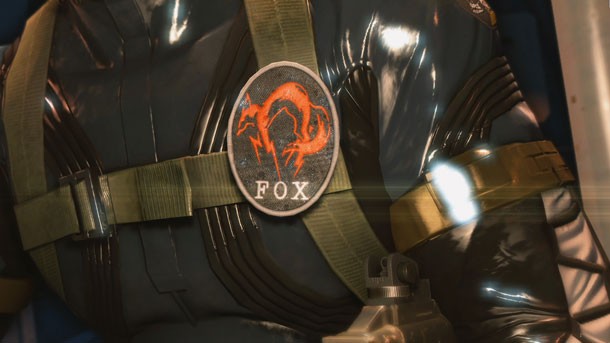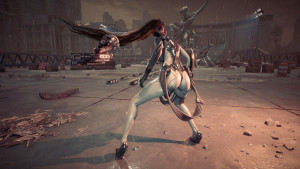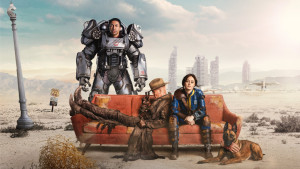Please support Game Informer. Print magazine subscriptions are less than $2 per issue
Kojima Discusses MGS V Hoax And Creating An Open World

Hot on the tail of showing off a live gameplay demo of Metal Gear Solid: Ground Zeroes, series creator Hideo Kojimas sat down to talk with us at the Tokyo Game Show about Metal Gear Solid V: The Phantom Pain and it’s prologue chapter. Among the talk of MGS V, Kojima discusses working with Keifer Sutherland and the differences between the current- and next-generation versions of the game. Kojima is less willing to directly address topics such as passing over Snake’s former voice actor, David Hayter, and whether he misses having access to the original Meta Gear Solid theme.
Were you happy with the public’s reaction to the hoax you played on the public leading them to believe The Phantom Pain was a new IP being developed by Moby Dick Studios?
It seems that people were happy about it, so I think we can call it a success. More than whether it was successful or not, it was that I wanted - to pull off that joke - and I was able to, so I’m happy about that. It seems that people liked it.
Why don’t you think more developers play with their fans like you did?
It’s certainly something risky and can come with many counter effects and cause controversy, not only from the outside but internally at a company. I personally understand why there’s not many people doing this. I certainly had to take some risks in doing this. There was some controversy internally and externally.
Have there been any lingering misconceptions about Metal Gear Solid V: The Phantom Pain that you’d like to clear up?
Well one thing is that this game, Metal Gear Solid V, is open world. I wanted to show that we can take all these Metal Gear elements and put them in an open world game. The main game is huge, it’s an open world, it’s a vast scenario. In Ground Zeros, I want to show that it’s rather limited, a small map and a small island. Yesterday I showed this in a presentation and my intention was showing people that despite being open world all the Metal Gear elements are there. Now it seems that a lot of the reaction has been “Well, that’s only Metal Gear Solid and it doesn’t show any of the open world elements”, so it’s really difficult to show that despite being open world we can have both elements. But it seems it was taken to the other extreme. That’s a little difficult to balance out, what to show so people can understand the message we’re trying to deliver.
Has the open world formula in Metal Gear Solid V affected the type of challenge the series usually delivers?
In the past with the linear games we could specify what we route we want the players to take, what difficulty it would have. Now that it’s an open world game it’s rather difficult to balance that because the players can pretty much choose whatever route they want. Depending on the player, the difficulty they encounter will be different. So that has been a little bit difficult balancing out the difficulty level in the game.
That said, each mission has its own difficulty level. There are some missions that are easier or more difficult. In that way we can balance. Given that it’s an open world, more than the difficulty of each mission, it’s choices that the player has to make. For example, if you go to infiltrate somewhere at night, the enemy has very limited vision, but also how much you can see is very limited. There are only so many things you can see and you can be surprised because of the darkness. However, if you go to the same place in the afternoon you have much better visibility and you can see what’s in front of you, but the enemy can spot you much more easily. You have to balance those elements and make those choices on how to play the game. In that way, this is a very different experience form the linear games in the past.
For example in a Ground Zeroes mission, you have this mission you have rescue Chico [formerly a child soldier in Metal Gear Solid: Peace Walker], and a challenge within that is to clear it with no kills, no alerts, or within two hours. That’s really something that makes a huge difference in how the player perceives the whole mission.
Speaking of nighttime, when I was watching the TGS 2013 gameplay demo I noticed enemies shield their eyes when strong light is shined on them. Is that going to be a gameplay mechanic?
Yeah, it is an element. For example, if you have a light on your gun and use it against your enemies, the first thing they will do is hide their eyes and you can use it as a gameplay element. But of course once you turn the light on they will know where you are. We didn’t show that in the gameplay demo during the show, but one the easier ways to get around during the night is with night-vision goggles.
Harry Gregson Williams has been composing music for the Metal Gear Solid series for some time. What kind of working relationship do you have with him and how involved are you in the composition and soundtrack approval process?
In Metal Gear Solid 3: Snake Eater he had never worked in game music. Right now he works on other titles as well for game music, but at that point he wasn’t sure of the difference and we had to work together on the difference between making movie music and game music. For example, in movies you just give the images and video to the composer and the composer creates something based on that. Whereas in games there’s not video of the gameplay, we have to go back and forth a lot explaining the whole concept of the game, what the idea is for the composition, and that’s the way we work on that. Cutscenes are rather easy, we just give the video of what we are creating and he composes something based on that. But for gameplay, it’s much more complicated and there’s a lot of back and forth and constant communication between me and Harry Gregson.
I understand that years ago Konami had to discontinue using the original Metal Gear Solid theme due to legal reasons. Are there ever times when you wish you still had access to that original theme?
That’s a rather tough question to answer.
What has it been like working with Keifer Sutherland (Young Guns, 24), as the voice and facial motion capture actor of snake?
Well Keifer, he’s a star and he’s an amazing actor. He’s a very cool guy to work together with. That said, at this time it has been rather difficult because with Keifer we’re doing facial capture and voice capture, and the recording has been rather difficult. This is because we already have the motion capture from another actor and into that we’re putting the facial acting and the voice acting. So he has to make all these facial changes and motion without moving and we’ve been handing Keifer quite a challenging task. He’s been very understanding in this. Maybe if there is a future occasion we’ll probably adapt performance capture which will make it much easier.
David Hayter has publicly commented that he’s upset for being passed over as the voice of Snake for the new game. What’s your reaction to this?
For this game, I wanted to have the full motion capture and full performance capture, however I realized I would have to be in Los Angeles for about a year, which was impossible given the agenda to create the rest of the game. So the motion capture was done with an actor here in Japan and the rest of facial capture and voice performance has been capture in Los Angeles in the U.S. with Keifer [Sutherland]. However if there is another Metal Gear, I’m not sure if I’m going to be in charge of it or not, it’s going to be probably be 3D capture, meaning it will be the whole thing with one person. It would be impossible by then to have one actor only for voice and another actor for the rest of the elements, so in that way I think it was also a good opportunity to make a shift for this character.
What is the main difference between the current- and next-generation versions of the game?
This game has been in development on multiple platforms for multiple generations, so it isn’t easy to say “This is a better option”. One thing is Metal Gear Solid V was originally in development for the current generation, that’s the whole reason we created the Fox Engine. So given that it’s open world, it was currently being made for current generation. If you look at each of the separate elements, it might look a bit more suited for current gen than next gen. For current gen, we are aiming for 30 frames-per-second while with next gen we’re aiming at 60 frames-per-second. Of course the next generation textures, resolution, lighting, and shadows look much better, but gameplay-wise as a game we are not making that many differences. If you look only at the missions, current gen and next gen won’t have that many differences other than the way they look. Now behind these missions there are several other big elements, outlets, or platforms that enrich the whole experience and that is only possible with next gen, so I might have to recommend playing on next gen because of the wider opportunities there are behind all of the game missions.
Can you tell us more about the second screen experiences being designed for next-generation consoles?
Right now we are not yet announcing all the second screen or tablet features we will have. I know a lot of other games are putting a lot of work into this. We are not ready to announce this officially. The one thing I can say is we are looking into what other game developers are making, as far as a second screen experience will go we will have something similar. But we definitely are going a step beyond that and that’s what the real essence of what Metal Gear Solid V will be and what that is in detail, I think it’s better that I don’t disclose it yet.










